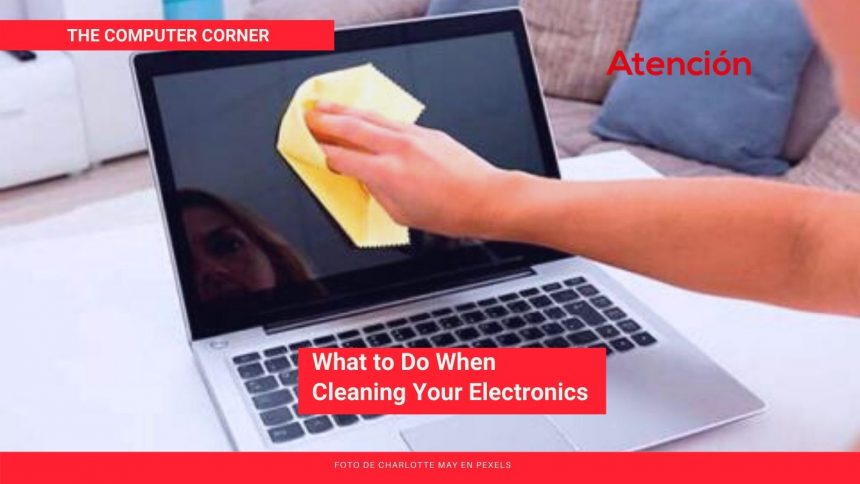Spring has sprung when we move our clocks forward to daylight saving time, and for many people, this is also time for some spring cleaning. With this in mind, I will answer some questions I have received over the years concerning the best ways to safely clean dust, fingerprints, or whatever from laptops and mobile devices.
First, a very stern warning: Consider that it might be better to leave your device in its dirty condition than to damage it in a botched cleaning attempt. Proceed with extreme caution, and if you are not willing to do that, then please stop reading!
Cleaning fingerprints off of laptop or smartphone screens should only be done with a microfiber cleaning cloth and an approved liquid cleaner. Cloths should be used only a few times then discarded—never laundered and reused. My favorites are the small packets of single-use paper microfiber towelettes pre-moistened with alcohol and marketed for cleaning eyeglasses. These are available at many pharmacies.
Sometimes eyeglass cleaning methods are not strong enough for oily fingerprints or built-up layers of dried hand lotion. Naphtha is a light petroleum distillate available as Ronsonol lighter fluid and ideal for tougher cleaning jobs. Something I learned from a philatelist friend is that Ronsonol evaporates so completely that some collectors use it to reveal watermarks on valuable stamps. It can also take the ink right off of letters on some keyboards, so start by testing with a letter you do not need to use often.
Certain plastics are mixed with a bit of synthetic rubber to make them less slick and easier to grip. Over time, the rubber molecules can degrade, turning from stretchy to sticky and leaving an unwanted residue on the surface. This can usually be removed using a cloth moistened with ammonia or 90 percent isopropyl alcohol (never denatured alcohol) or methyl hydrate.
The acrylonitrile butadiene styrene (ABS) plastic used in desktop computer cases, monitors, printers, etc., can contain bromine as a fire retardant. If the ABS is white, over time it can turn a sickly yellow color. This can be mitigated by cleaning with hydrogen peroxide, and there is a highly recommended commercial product by the name of Retr0bright (spelled with a zero).
For using any or all of these cleaning methods, safety is paramount. Ammonia is caustic; alcohol is flammable, and lighter fluid is extremely flammable, so it is important to follow all safety precautions when using any of these solvents. This means gloves and eye protection worn in a well-ventilated area. Turn off your device and unplug it from power so there are no electrical sparks.
Start your cleaning slow: Add a few drops of liquid on a cotton swab to clean a small test area to make sure you are not doing damage to your device. Never pour any liquid on your electronics, only on a cloth or cotton swab.
Charles Miller is a freelance computer consultant, a frequent visitor to San Miguel since 1981, and now practically a full-time resident. He may be contacted at 044 415 101 8528 or email FAQ8@SMAguru.com.

